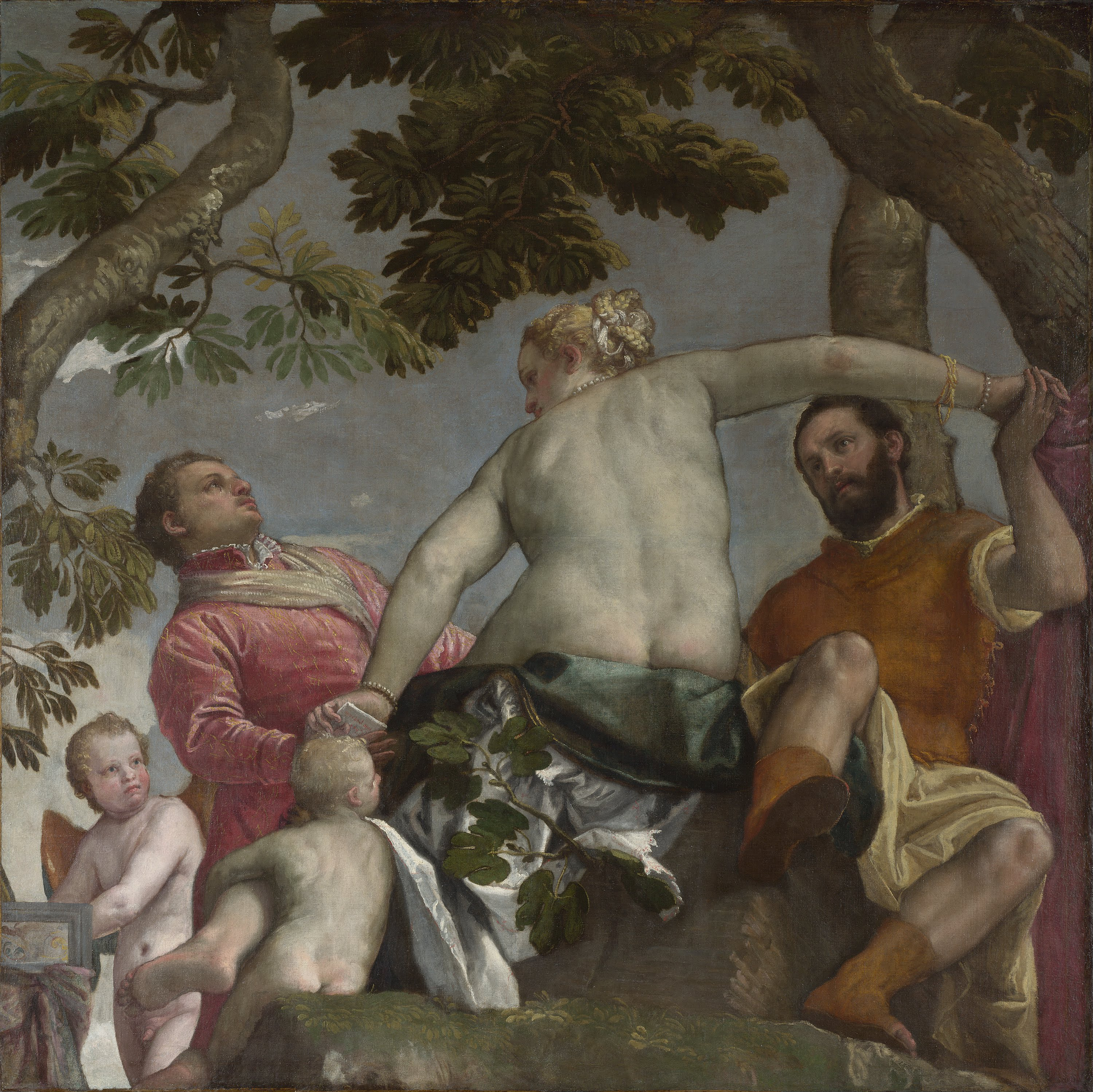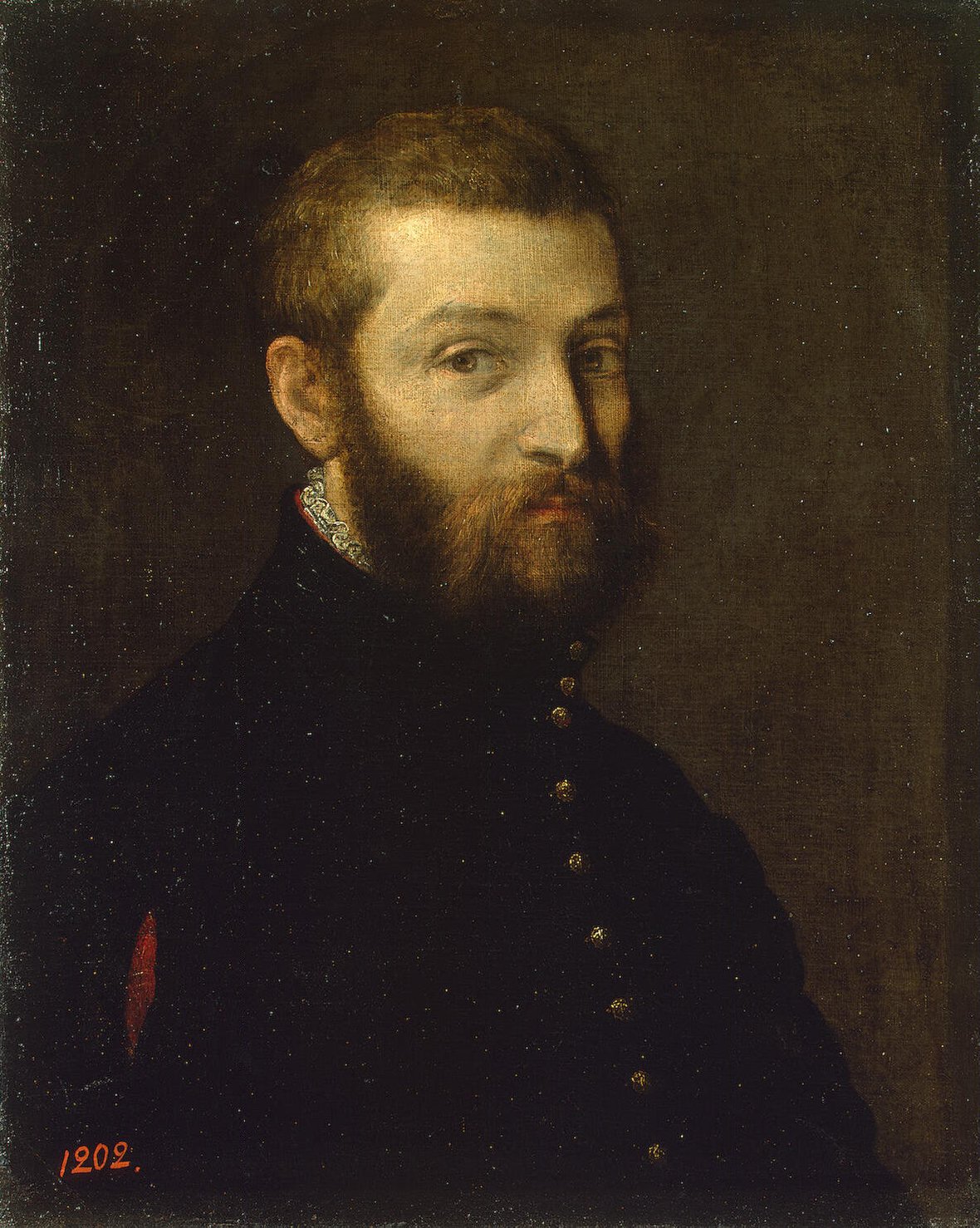The dominant theory is that the picture represents a classical love triangle, with a secret letter being passed between one of the men and the nude woman. Cupid, the symbol of love, is on the left.
The painting is a part of a bigger series. These four paintings are Allegories of Love, each concentrating on a specific aspect. They seem to deal with Unfaithfulness, Scorn, Respect, and Happy Union, although their precise meanings remain unclear and have been much debated. The costumes and hairstyles may indicate a date in the 1570s.They were probably made to decorate a ceiling and form a complete series.
We do not know who commissioned them, but their presence in 1648 in the Prague Castle suggests that it may have been one of the Holy Roman Emperors, Ferdinand I (died 1564) or Maximilian II (died 1576), or a wealthy patron at the court. Alternatively, they may have been painted for a location in Venice, as two details from them are recorded in the famous sketchbook that Van Dyck kept in Italy between 1621 and 1627.


 Paolo Veronese
Paolo Veronese